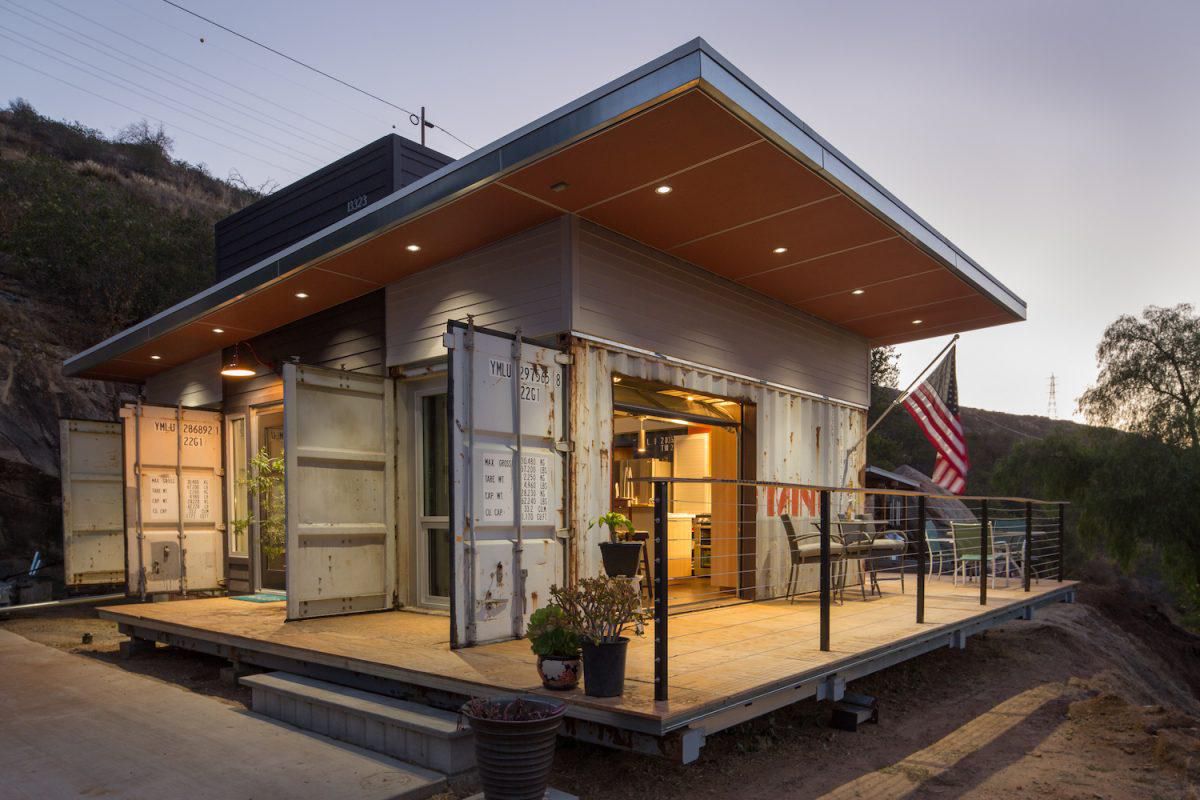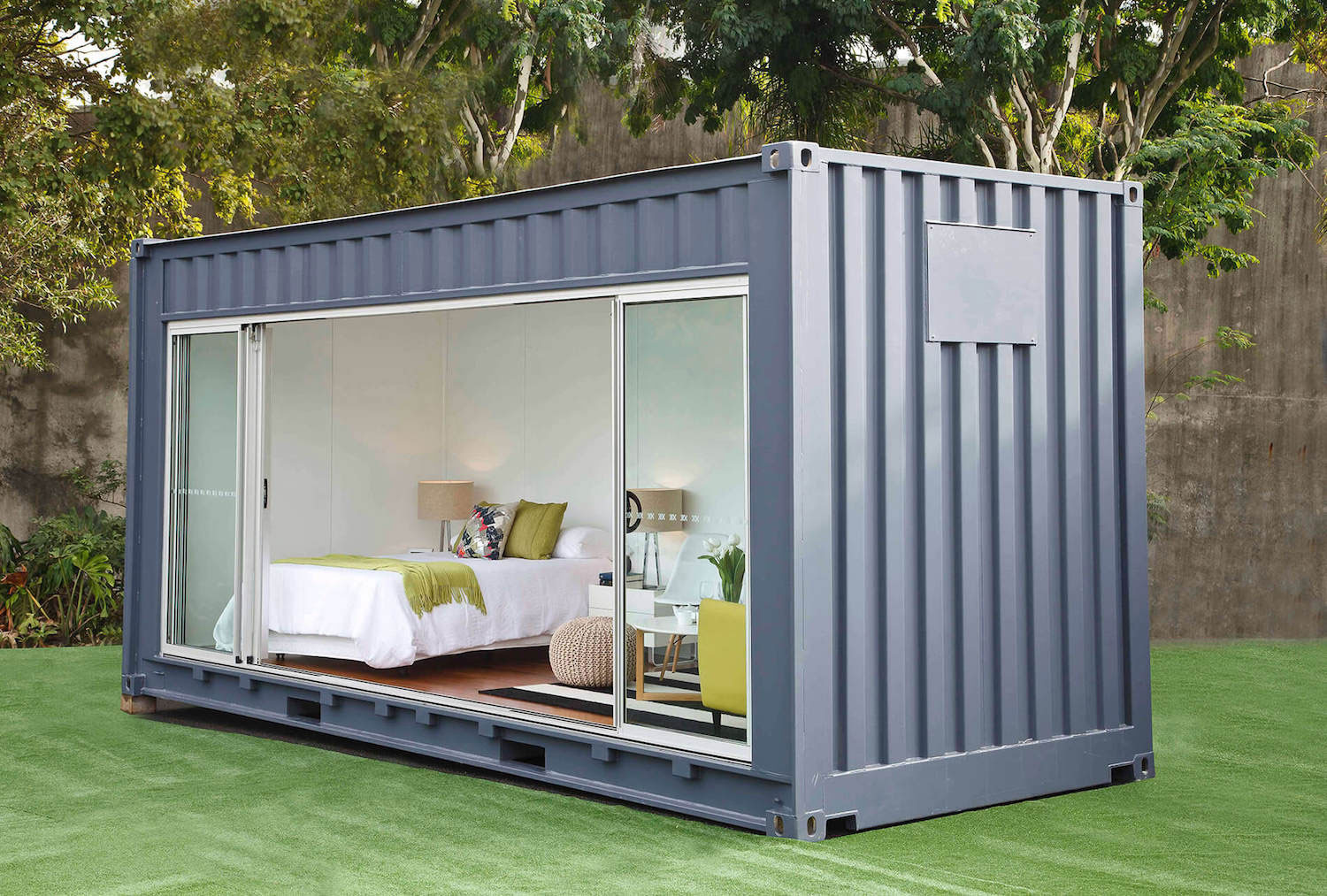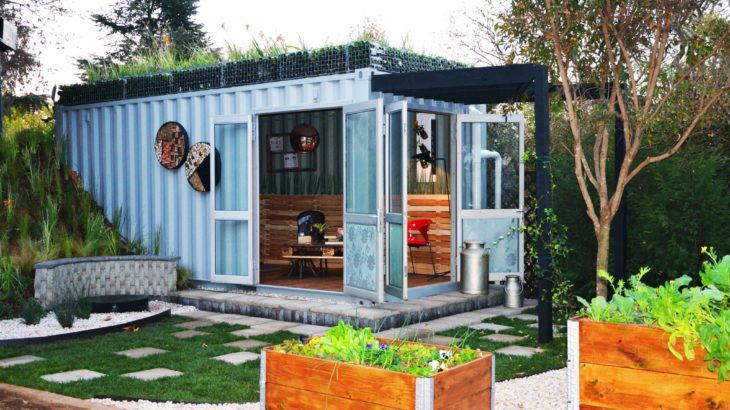Building a eco-friendly tiny home is a big decision, but one that can be simplified by using an existing structure. For this reason, more and more people are looking to shipping containers as a base for their new abodes rather than starting from scratch.
If you’ve been contemplating going down this same route for your next building project, then this short guide is the perfect way to get started. We hope to cover all the basics of converting a shipping container into a comfortable green home or small office. Let’s get started.
Zoning Requirements: Match Your Dreams to Reality
Before you start your hunt for the perfect shipping container to build out of, it is important to ensure that your work site is suitable, and can legally accept a tiny home. Some areas, for instance lakefront areas, require a certain square footage to meet regulations. Make sure that you’re getting all required permits before you begin work.

Planning for Your Dream (Tiny) House
Once you’ve obtained all relevant permits, and have been given the green light to proceed, you need to decide how you want to layout your property. Take the time to assess entry points, lighting angles, where you want to fit your septic tank and electric generators, and make sure you’ve left plenty of room for your container to be loaded and placed. You may need to account for heavy machinery like cranes and bulldozers moving around your site during the construction phase as well.
When it comes to your shipping container itself, it’s a good idea to plan for where you want the doors and windows to be. Some companies even offer modification services prior to delivery, which can save you the hassle of operating an arc welder and blowtorch yourself. Aside from windows and doors, there are other aspects you may want to consider. For example, lofts are popular for tiny homes, but most shipping containers are only 8-8.5′ high, so you’d need to buy two and create a double-decker. If you’re looking to create more space, you could also put a couple containers end to end and weld them together to make a longer home. The internet is full of exciting designs, so don’t be afraid to look around. A further pro-tip would be to consider a living roof. While there is a certain level of maintenance and upkeep that goes into these types of roofs, they are also more eco-friendly and can help insulate your home better than traditional roofing styles.
Get Started: How to Build a Shipping Container Home
The first thing you’ll want to do is lay the foundations for your tiny home. You could either use cement blocks or pre-cast piers to ensure you maintain the airflow beneath the container. After all, the last thing you want is the floor rusting away due to wet conditions.
If you didn’t have the container modified ahead of delivery, you will also need to cut holes for your windows and doors. You’ll also need to scrub the floors and treat them with epoxy to cover any pesticides or chemicals that may have used to keep shipments safe in your container’s previous life. Make sure to install a plywood subfloor over the epoxy.
Next, install any walls you plan to add, using the ridges in the walls and ceiling to build the framing. Then, install the windows and doors. Lastly, it’s time to add the roof, whether you go for a live roof or more traditional style.
Getting Help from the Professionals
Once you’ve gotten the framework of your home sorted out, you can now begin working on the plumbing, electricity, and other internal projects like insulation and drywall. This is where, unless you have experience in these fields yourself, you will want to get in touch with tradespeople that specialize in tiny homes to give you a hand.
A few tips we can give you include looking into green insulation like cellulose from old newspapers that makes up blown-in insulation, or old recycled denim. Green power options can also be part of your tiny home project, from solar power to geothermal heating. Make sure all these options are part of your building project so that your home can be a place you’re proud of.

Finishing Touches
The final step to building your new container home is the interior decor. This involves choosing paint colors or wallpaper, if you go that route. You’ll also want to build or buy furniture that converts for multiple purposes. There are many carpenters that focus on building green furniture, so go online to find your nearest one.
With these steps for how to build a shipping container home, the only thing you need now is the actual container. Do you have any experiences you’d like to share in the comments below? We’d love to hear from you.



















